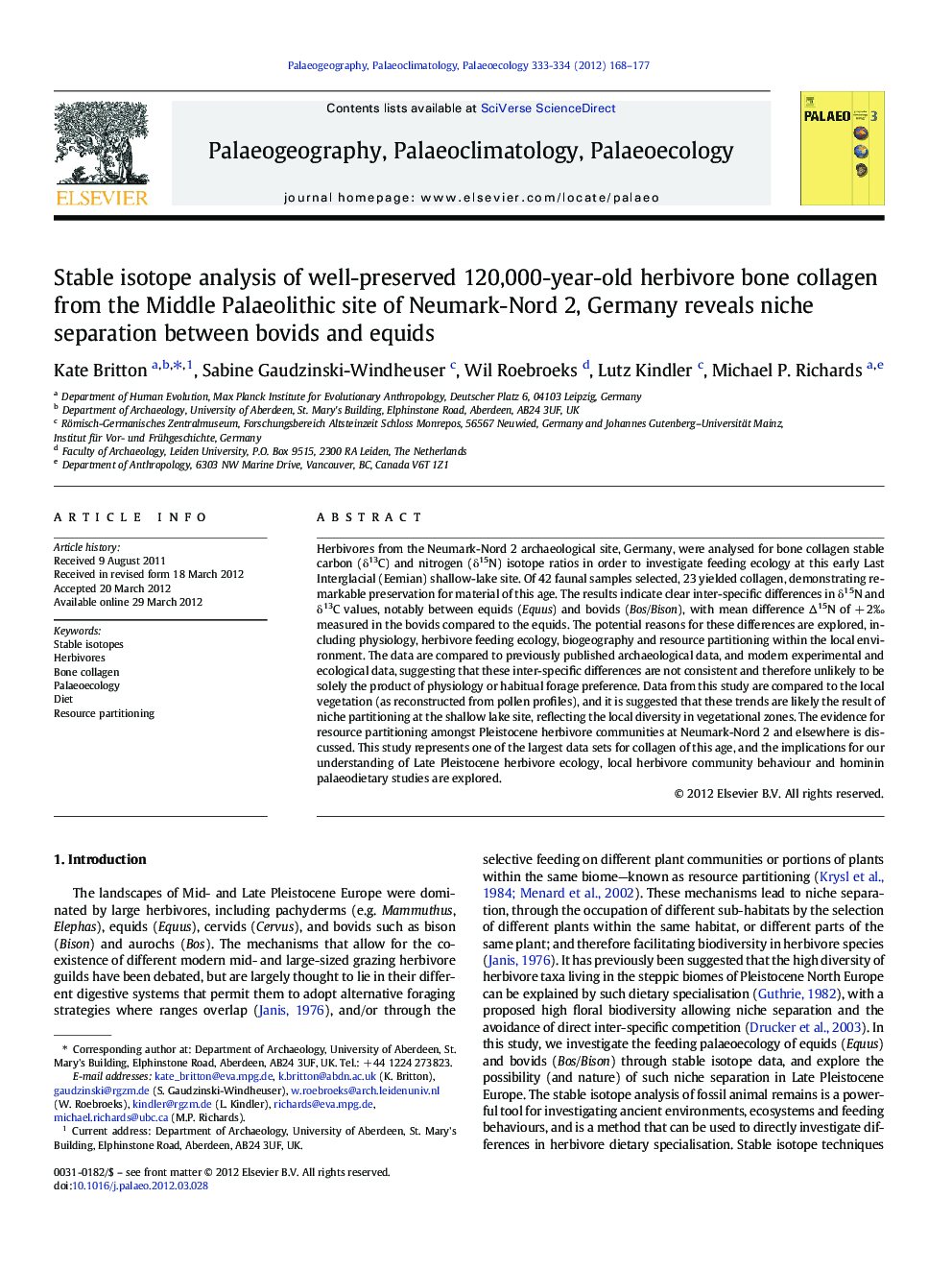| Article ID | Journal | Published Year | Pages | File Type |
|---|---|---|---|---|
| 4466954 | Palaeogeography, Palaeoclimatology, Palaeoecology | 2012 | 10 Pages |
Herbivores from the Neumark-Nord 2 archaeological site, Germany, were analysed for bone collagen stable carbon (δ13C) and nitrogen (δ15N) isotope ratios in order to investigate feeding ecology at this early Last Interglacial (Eemian) shallow-lake site. Of 42 faunal samples selected, 23 yielded collagen, demonstrating remarkable preservation for material of this age. The results indicate clear inter-specific differences in δ15N and δ13C values, notably between equids (Equus) and bovids (Bos/Bison), with mean difference Δ15N of + 2‰ measured in the bovids compared to the equids. The potential reasons for these differences are explored, including physiology, herbivore feeding ecology, biogeography and resource partitioning within the local environment. The data are compared to previously published archaeological data, and modern experimental and ecological data, suggesting that these inter-specific differences are not consistent and therefore unlikely to be solely the product of physiology or habitual forage preference. Data from this study are compared to the local vegetation (as reconstructed from pollen profiles), and it is suggested that these trends are likely the result of niche partitioning at the shallow lake site, reflecting the local diversity in vegetational zones. The evidence for resource partitioning amongst Pleistocene herbivore communities at Neumark-Nord 2 and elsewhere is discussed. This study represents one of the largest data sets for collagen of this age, and the implications for our understanding of Late Pleistocene herbivore ecology, local herbivore community behaviour and hominin palaeodietary studies are explored.
► We analysed Eemian herbivore bone collagen (δ13C, δ15N) to infer feeding behaviour. ► Data show inter-specific differences (equids/bovids) suggesting niche separation. ► Cross-site comparisons evidence potential for niche instability through time. ► Niche separation to avoid inter-specific competition and increase biodiversity. ► Importance of total ecosystem approach in hominin palaeodietary studies.
